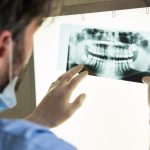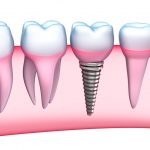Invisalign versus Braces
The goal of all aligners is to right the wrongs when it comes to tooth spacing and placement in the mouth. If left untreated, these can cause a wide variety of dental and aesthetic problems. Thanks to huge developments in cosmetic dentistry over the years, alignment procedures are no longer the aesthetic nightmare they once were, and the choice of types of braces and aligners is fairly wide.
Which one of those devices is right for you, is a question only your dentist can really answer. It will involve a thorough assessment of your dental problems, your needs and your outcome goals – plus a good understanding of the different types of aligners available and their strengths and weaknesses as treatments.
Invisible braces
One of the most popular forms of aligners is Invisalign. Its popularity stems from the fact that it is the furthest away from the traditional images of wire grid-like braces which used to embarrass and torment their teenage wearers in the old days. Invisalign is almost invisible, doesn’t involve elastic bands or brackets, and best of all, there are no wires.
There is no impact on your speech and the Invisalign trays can be removed when you eat, or when you want to brush or floss. Several sets of Invisalign trays are created and are replaced every couple of weeks, each new set providing a little extra pressure to move the alignment process forward.
Invisalign can be used to space out crowded teeth or reduce space when teeth are too far apart. It can also be used to rectify simple problems with your bite, and sometimes helps deal with mild relapses after traditional braces have been used.
Drawbacks: Because they are removable, the onus rests on you, and you alone, to make sure you don’t remove them too often. The aligner must be worn for at least 20 hours each day. Treatment can take anything from 9 to 18 months, depending on the severity of your misalignment and the outcome desired. Invisalign is considered ideal for less complicated alignment issues, but many dentists still recommend choosing attached metal braces when the movement required is more challenging.
Dental braces
There are different versions of these descendants of the old school wire braces, and none of them are anywhere near as ugly. But though not as intrusive, they are not invisible. Dental braces are used to correct most alignment problems, including crookedness, protrusions, crowding and irregular spacing, as well as problems with your bite. Dental braces are usually advised for more difficult cases.
- Metal braces: The nearest descendants of the old type, these still involve visible wires and brackets. They are regarded as being the toughest, and most effective, in complex cases. Makers of these new-look metal braces attempt to provide a quirky, literally in-your face statement by producing them in funky colours to brighten your smile. The braces, which are fitted to the teeth, have brackets in the front which press against the teeth’s surface, so adding extra control of the tooth movements in aligning and straightening.
- Lingual Braces, sometimes called Incognito Braces, are also attached to the teeth, but this time to the back of the teeth so as to be less intrusive. They are cast in gold rather than stainless steel, formed to the shape of your teeth, and have custom-fitted wires. These braces can also be constructed so as to involve only the most visible teeth.
- Ceramic braces: Created out of ceramics and coloured to match your teeth, these braces are not as smile intrusive as the metal ones. The ties which hold the device are available in a choice of white or clear, to further lessen their visibility. They do require more maintenance, take longer to put in, and are a bit fragile, which can lead to chips or breaks.
Drawbacks: Dental braces in general are anything but invisible, and they are attached to the teeth for the duration of the treatment. Some can impact on your speech, make oral hygiene more difficult and occasionally irritate the gums, tongue or inner cheeks.
Check the details
All forms of aligners usually require the use of a retainer after the realignment is completed. This is to prevent the teeth from moving back to the place or angle the treatment was designed to correct. How long the retainers will be required depends on individual situations. Be sure to ask your dentist’s opinion on which type of aligner to use and discuss the details of the treatment involved.






